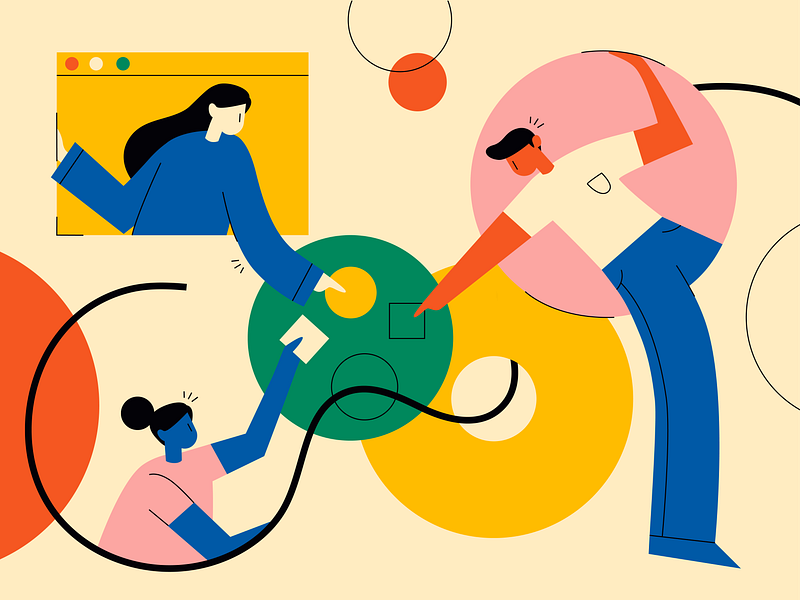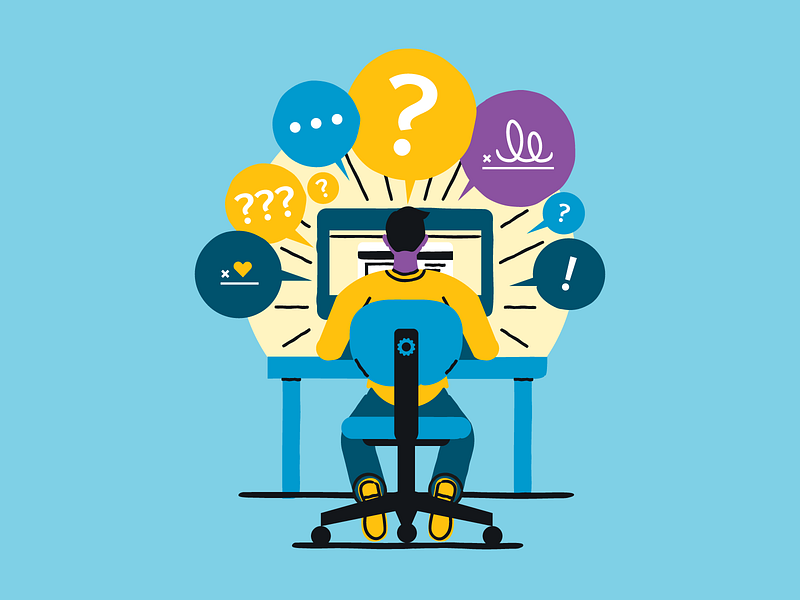As companies continue to embrace the work from home lifestyle, UX research methods like remote usability testing have become more relevant than ever.
While remote usability tests share a lot of similarities with its in-person counterpart, remote usability tests require more preparation and planning, especially in setting up the tools you use. This can be tough, especially when it’s your first time conducting a remote usability test.
To help eliminate some of these challenges, I’ll be sharing five tips that have helped me run more effective remote usability tests.
Row 1: Drew Ellis, Vaishnave Senthil for Kissflow, Allegra Parlavecchio.
1. Recruiting users is more effective with the help of friends
Recruiting users can sometimes be difficult, especially when they come from a niche demographic. Chances are, you might not know a lot of people from this demographic. You might also spend a few hours looking for leads and cold-calling them one by one.
A workaround to this is to ask friends who know people from these demographics to introduce you to them. That way, the interaction between you and a potential recruit is warmer since you’ll be known as the friend of his or her friend.
For example, when your target users are middle-aged owners of small businesses, and you happen to have a friend who’s well-connected to these types of people, you can ask your friend to introduce you either through email or online group chat. It’s easier to get potential recruits to participate in your usability test when you’re someone who’s more familiar to them.
2. Gauge what setup works best for your recruited users
In some cases, your users might not have certain software such as Zoom or Skype installed on their devices. Sometimes, they don’t use digital products like Google Hangouts or don’t own computers with a working webcam. Things like this can hinder you from conducting a remote usability test with your users. As such, it’s important to gauge what kind of setup works best for them by asking the following questions days before a remote usability test:
- Do you have a computer with a working webcam? If not, can you use your smartphone?
- Do you have the needed application/s (e.g. Zoom, Skype, Viber, etc.) on your device?
- If you don’t have the aforementioned software, are you willing to install it on your device?
3. Have a list of backup plans in case anything goes wrong during testing
Not everything goes as planned during a usability test. WiFi can slow down, your users may not know how to use certain video conferencing software, and your users can forget they have to join a remote usability test in the first place. The list goes on.
That’s why it’s important to have written contingency plans for the worst-case scenarios. While worst-case scenarios don’t always happen, having written contingency plans will give you an idea of what to do when a problem strikes.
For example, if you anticipate that the majority of your users aren’t tech-savvy and that they don’t know how to use Google Hangouts, write down steps as to how you can guide them in navigating the software. Enumerate how you can assist them in terms of joining the video call, sharing their screen, and unmuting themselves during the remote usability test.
4. Get to know your users and make them feel comfortable
Remote usability testing isn’t solely about giving users several tasks to do and asking them questions along the way. Rather, remote usability testing is also about establishing rapport—getting to know your users and making them feel comfortable.
An effective way to establish rapport with your users is to ask them one question at the start of the remote usability test—How are you? As a stretch goal, you can also make the question more specific by anchoring it on a certain aspect of their life. For example, if your user is a small business owner, you can ask, “How’s your business so far?” Similarly, if you know your user has just climbed a mountain, you can say, “I saw that you recently climbed a mountain. How was it?” In the middle of the remote usability test, you can also ask your users how they’re finding the remote usability test so far and whether they have any questions.
Once you have established rapport with your users, they’ll feel more open to sharing their thoughts with you. On the other hand, you will obtain better feedback as to how you can improve your digital product. It’s a win-win for everybody.
5. Ask probing questions to get a deeper understanding of the user’s thoughts
When the user doesn’t understand a part of the interface or when they are unable to complete a task, knowing where the user got confused isn’t enough.
Instead, it’s equally important to know the why—what made the user behave this way, and what thoughts contributed to this behavior? To get a deeper understanding of the user’s thoughts, try asking any of the following probing questions:
- What makes you think this way?
- What did you expect to see when you performed this action?
- What’s the importance of doing this action?
- What was your initial understanding of this concept?
Pro tip: It’s best not to ask these questions while the user is accomplishing the set of tasks, as this tends to interrupt his or her train of thought. Instead, leave some time at the end of the remote usability test to go over the probing questions you have.
Bonus Tip: Have people from different teams observe the remote usability test
In Rocket Surgery Made Easy, Steve Krug advocated for making usability testing a spectator sport. This means having people from different parts of the organization attend the usability tests.
What’s helpful about this is that the entire group benefits by having a more profound understanding of the customer, and an opportunity to compare observations after the testing. More than that, encouraging people to attend usability tests keeps them involved in the design process—that’s because they are aware of the user’s pain points and they can influence the design and the content.
![]() Frances To is a Product Designer at First Circle, a FinTech startup ($28.5M Post-Series A), by day. By night, she’s a freelance illustrator who loves to blog. You can view her illustrations on Instagram or read her blog on Medium.
Frances To is a Product Designer at First Circle, a FinTech startup ($28.5M Post-Series A), by day. By night, she’s a freelance illustrator who loves to blog. You can view her illustrations on Instagram or read her blog on Medium.
RELATED READING:
- A UX Designer’s Guide To Interpreting Human Behavior
- 5 Simple Habits to Improve UX Research
- User Research is the Key to Empathy
Find more Process stories on our blog Courtside. Have a suggestion? Contact stories@dribbble.com.
















